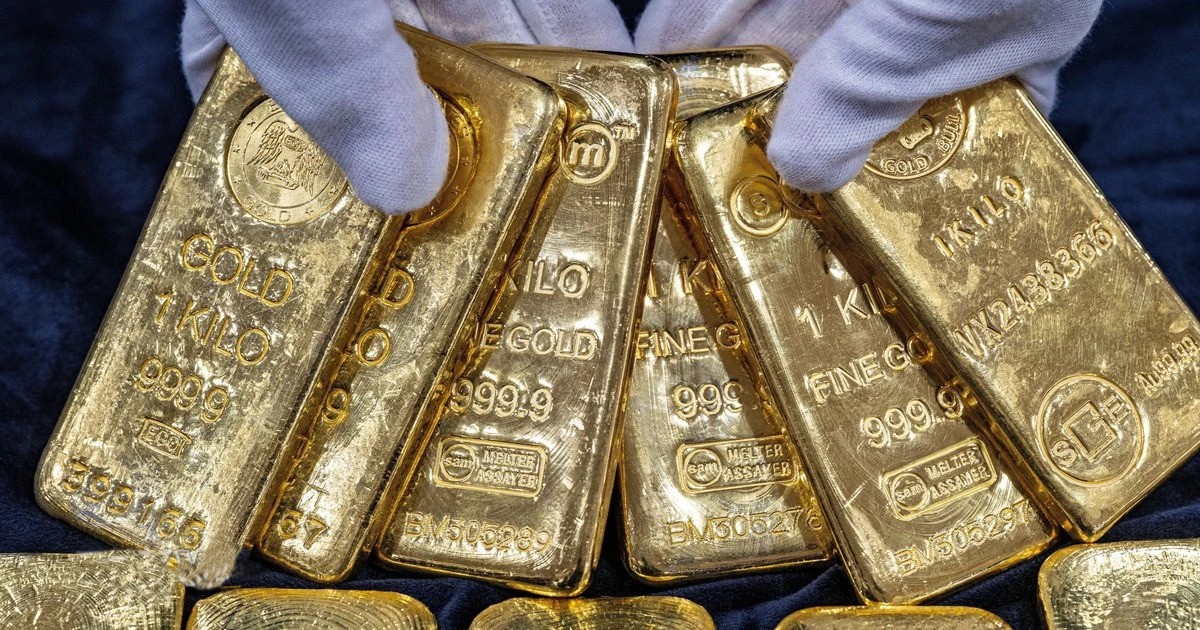
The global gold market has experienced a volatile trading week, starting with a price increase based on expectations about the US Federal Reserve's (Fed) policy, then culminating in a chaotic price increase on August 8, after the US unexpectedly put gold bars under import tax.
That development pushed gold futures to an all-time high before cooling off after the White House pledged to provide more clarity next week.
At the end of the trading session on August 8, the price of gold for December 2025 delivery in the US closed up 0.13% to $3,491.30/ounce after hitting a record $3,534.10 earlier in the session. The spot price of gold was flat at $3,396.80/ounce.
For the week as a whole, spot gold prices recorded an increase of about 1% while US gold futures prices increased by 3.47%. The trajectory of the gold market this week was initially led by expectations of the Fed's interest rate policy with consecutive increases from August 4-5.
After a slight decrease on August 6 due to profit-taking, gold prices hit a two-week high on August 7 when new US tariffs on a series of countries officially took effect.
The market focus changed abruptly on August 8, after the Financial Times revealed a new regulation by the US Customs and Border Protection (CBP).
According to a document issued by CBP on July 31, 1kg and 100-ounce gold bars will be classified under commodity code 7108.13.5500 - a taxable type under the new US tariff schedule.
This is a move that goes against the previous expectations of the gold industry, which believed that these types of gold bars would be exempt from tax based on a different classification code.
The 1kg gold bar is the most popular type traded on the Comex - the world's largest gold futures market - and is also the mainstay of Switzerland's gold exports to the US.
The news sparked a wave of buying in the futures market. However, gold prices pared gains late in the session after reports that the White House plans to issue an executive order clarifying its tariff policy on gold bullion.
In response to this development, Ms. Susannah Streeter, head of currencies and markets at asset management company Hargreaves Lansdown, commented that the panic price increase showed that even safe-haven assets were not immune to the uncertainty arising from US tariff policy.
According to Neil Welsh, Head of Precious Metals at investment brokerage Britannia Global Markets, this move disrupts the traditional flow of bullion trading between London, Switzerland and the US.
As the world’s largest gold refining center, Switzerland has been hit hardest by the 39% tariff imposed by the U.S. Due to the uncertainty, several major Swiss refineries have been forced to suspend gold shipments to the U.S.
If gold exports to the US decline, that could increase market volatility.

Ole Hansen, head of commodity strategy at Saxo Bank, compares this market disruption to the one that occurred during the COVID-19 pandemic.
He explained that the US Comex floor is often used by global bullion banks as a highly liquid hedging instrument for trading in the bullion market.
The sudden imposition of tariffs could undermine confidence in the New York market as a stable trading environment, prompting other global trading hubs to emerge as alternatives.
In another notable development that signals a shift in global gold policy: A senior Indonesian lawmaker has proposed a ban on gold exports.
The aim of the plan is to promote the development of the domestic bullion banking system, increase national reserves and make more effective use of the country's huge gold reserves.
Next week, the market will be focused on the White House's announcement on gold bullion tariffs, to determine whether the recent market disruptions are a temporary anomaly or a new structure.
Aside from tariffs, investors will continue to monitor upcoming economic data and comments from Fed officials.
The market is currently pricing in a more than 90% chance that the Fed will cut interest rates by September 2025. Therefore, any new information that challenges this view could cause major market volatility.
Source: https://baolaocai.vn/vang-thoi-vao-tam-ngam-thue-quan-thi-truong-bien-dong-manh-post879131.html
































































































Comment (0)